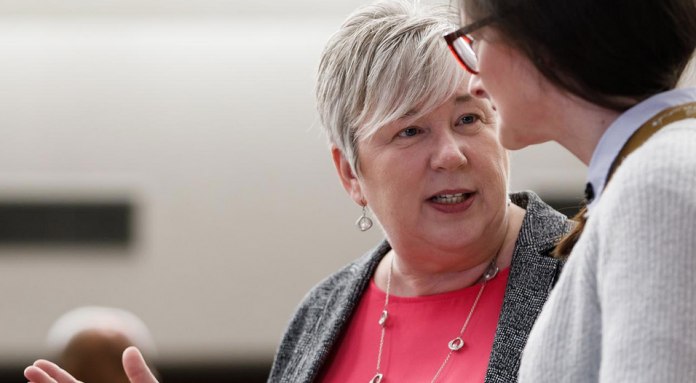CAD 11.8 million to be spent. Information will inform regulatory decision-making.
The Government of Canada is trying to understand Atlantic salmon migration in the offshore waters of Eastern Canada.
Funded
On Monday, the Minister of Fisheries, Oceans and the Canadian Coast Guard Bernadette Jordan announced in a statement along with the Minister of Natural Resources Seamus O’Regan Jr. that Fisheries and Oceans Canada received CAD 11.8 million (EUR 8 million) from the Environmental Studies Research Fund (ESRF) administered by Natural Resources Canada.
The ESRF supports environmental and social research and is funded by levies paid by lease-holding oil and gas companies active in Canada’s frontier lands.
Dr. Martha Robertson, a Fisheries and Oceans Canada research scientist from Newfoundland and Labrador, and her team are using this funding to track Atlantic salmon migration patterns in the offshore regions in eastern Canada over a five-year period.
New science-based information on Atlantic salmon migratory patterns at sea will inform regulatory decision-making in the offshore Atlantic Fisheries.
50 partners
Fisheries and Oceans Canada will collaborate with over 50 partners in this project. This includes 30 federal and provincial government partners, 14 Indigenous organizations and governments, and seven industry, academic, and non-governmental organizations.
“Working together, partners will advance knowledge on wild Atlantic salmon by sharing expertise and resources, and generate knowledge that can improve conservation and management of this iconic species,” wrote the DFO.
Funding will be provided to a number of key research partners including The Ocean Tracking Network (OTN) at Dalhousie University, who will receive CAD 2.4 million (EUR 1.6 million) for acoustic telemetry work; the Unama’ki Institute of Natural Resources (UNIR) will receive CAD 1.1 million (EUR 0.7 million) to support the incorporation of essential Indigenous knowledge, and coordination with local communities; and the Atlantic Salmon Federation (ASF) will receive CAD 2.5 (EUR 1.6 million) for fieldwork involving satellite telemetry.
The work builds upon the investments already made in Atlantic salmon science by the Government of Canada. This includes the Atlantic Salmon Research Joint Venture, and the Coastal Restoration Fund, which supports improving salmon habitat and restoring and protecting marine and coastal habitats.
Atlantic salmon populations
“Salmon are an iconic and important species from coast to coast to coast. It is our responsibility as a Government to ensure that we better understand our Atlantic salmon populations, not only to set them on a path for strong recovery, but so they are able to fully thrive one day. This research project is an excellent example of how we are working with local communities, leveraging our collective resources and ingenuity to help better understand Atlantic salmon populations,” wrote Bernadette Jordan.
O’Regan added that the data will help to make “better decisions on managing our ocean resources.”

